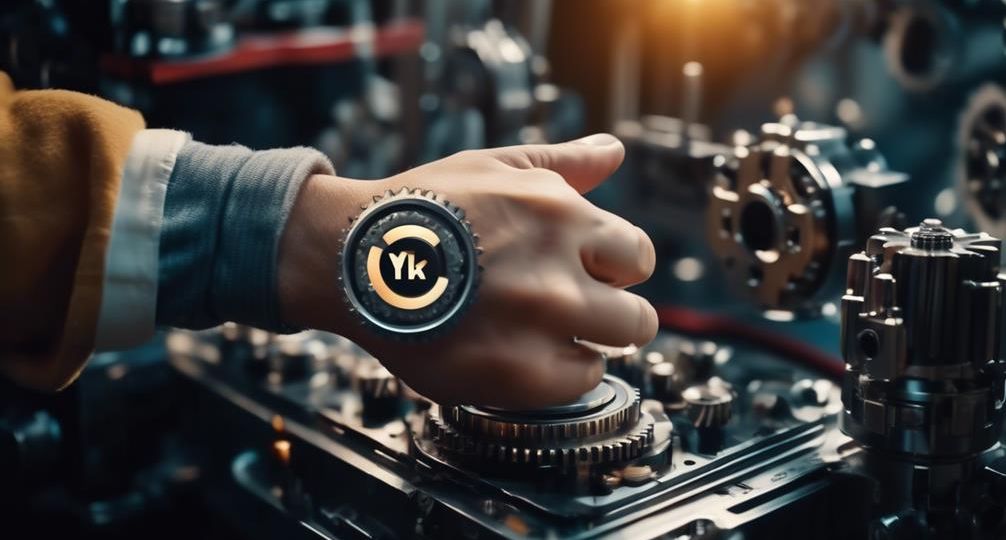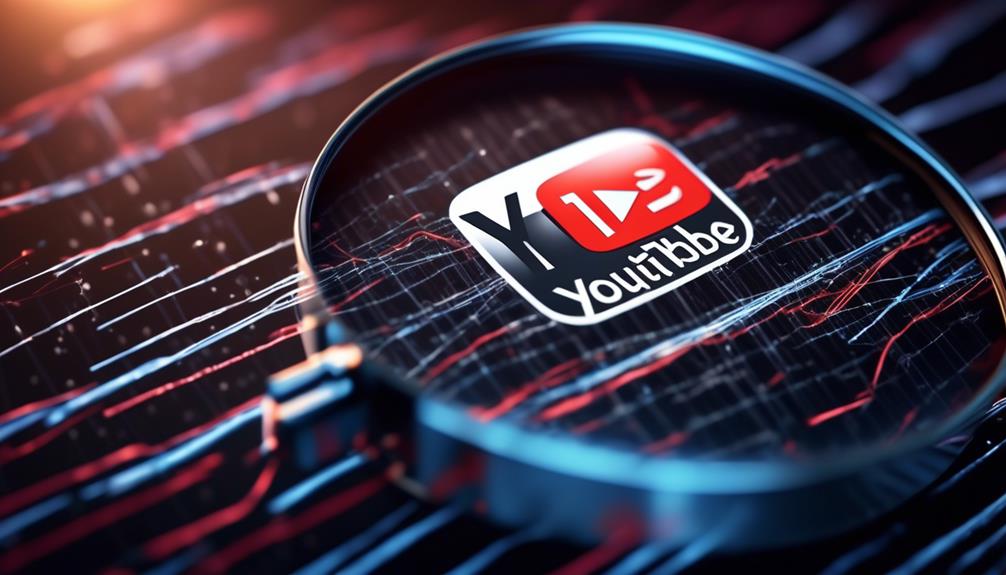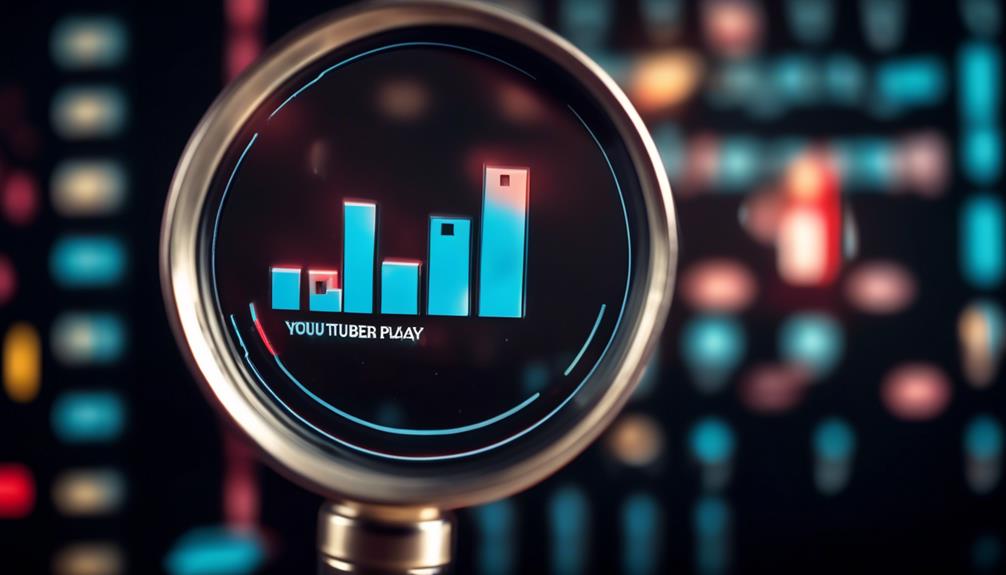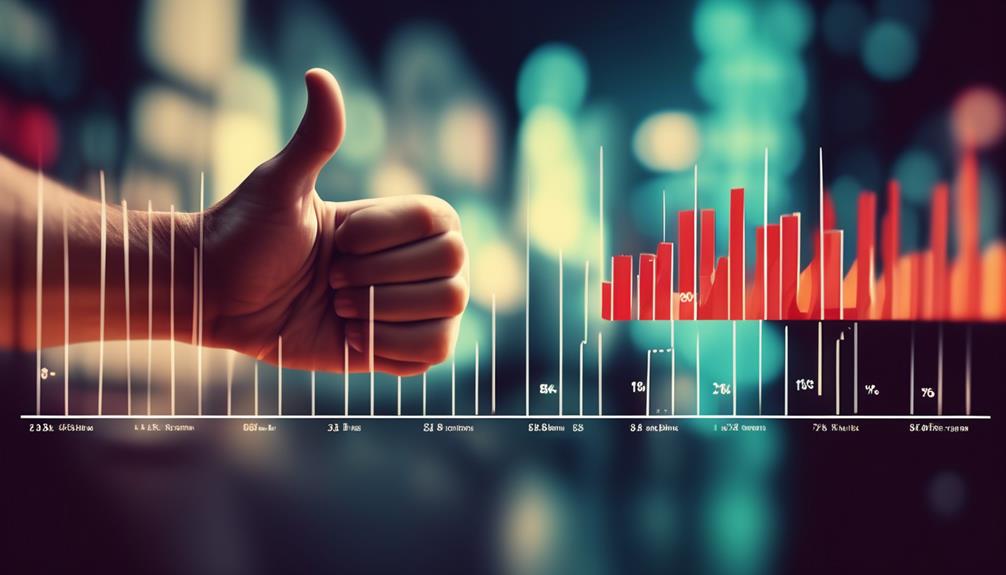
Do likes help the YouTube algorithm?
Like a chef adding just the right amount of spice to a dish, the YouTube algorithm carefully balances a multitude of factors to decide which videos get pushed to the forefront.
You’ve probably wondered at some point if hitting that ‘like’ button really makes a difference. It’s a question many content creators and viewers alike grapple with, as they seek to understand the intricate workings of the YouTube algorithm.
Stick around, and we’ll navigate through this complex topic together, and perhaps debunk a few myths along the way.
Key Takeaways
- User interaction, including likes, plays a crucial role in influencing YouTube’s recommendation algorithm.
- Likes indicate the level of engagement and satisfaction with a video, and a higher like count can boost visibility and recommendations.
- Encouraging viewers to like and share content can increase engagement metrics, leading to longer watch time and more social sharing.
- Likes are influential factors that directly influence how a video is perceived, promoted, and ranked in search results.
Understanding YouTube’s Algorithm

To truly master YouTube’s platform as a content creator, you need to unravel the workings of its complex algorithm, which plays a pivotal role in determining your video’s reach and visibility. The algorithm’s complexity isn’t just a stumbling block; it’s an opportunity to optimize your content and increase its visibility. It’s not about gaming the system, but understanding how to work within it effectively.
YouTube’s algorithm evaluates several factors to decide which videos to recommend. These include user interaction (likes, comments, shares), how long viewers watch your video (watch time), and the freshness of your content. It’s a dynamic and ever-evolving beast, continuously adapting to user behavior and trends, so staying updated is critical.
For video monetization, the algorithm is your best friend. It’s the gatekeeper, determining whether your content reaches your target audience and consequently, whether you’ll earn revenue. By creating high-quality, engaging content that keeps viewers hooked, you’re not just satisfying your audience, you’re satisfying the algorithm.
The Role of ‘Likes’ on YouTube
Consider how likes on YouTube play an integral role in the visibility of a video. They’re not just a simple measure of viewer appreciation, but a key influencer on viewer engagement and the algorithm’s preference.
Understanding this, you’ll see how ‘likes’ can effectively boost a video’s reach and popularity.
Likes’ Impact on Visibility
In the ever-evolving landscape of YouTube, ‘likes’ play a pivotal role in determining a video’s visibility and popularity. They’re a form of social sharing that signals to the algorithm that your content is engaging and worth promoting. But remember, ‘dislike’ impacts are also considered, making the engagement landscape a bit more complex.
- Viewer Engagement: ‘Likes’ indicate your video’s level of engagement.
- Algorithmic Boost: A higher ‘likes’ count can push your video up in recommendations.
- Social Sharing: ‘Likes’ often lead to more shares, further increasing visibility.
- Dislike Impact: Contrarily, a high ‘dislike’ count can negatively affect your video’s reach.
- User Satisfaction: ‘Likes’ serve as a measure of viewer satisfaction, influencing future content decisions.
Embrace this knowledge, create innovative content, and let the ‘likes’ guide your YouTube journey.
Influencing Viewer Engagement
Building on this understanding of the algorithm’s reliance on ‘likes’, let’s explore how you can effectively influence viewer engagement on your YouTube content.
You can use ‘likes’ as a tool to increase engagement metrics, leading to better visibility on YouTube. By encouraging your viewers to like and share your content, you’re increasing social sharing, furthering your reach. Here’s a simple table demonstrating how ‘likes’ can boost your engagement and visibility:
| Engagement Metric | How ‘Likes’ Help |
|---|---|
| Watch Time | ‘Likes’ increase the likelihood of viewers watching your content longer |
| Social Sharing | ‘Likes’ encourage viewers to share your content, expanding your reach |
| Comments | ‘Likes’ can motivate viewers to comment, increasing social engagement |
| Subscriptions | ‘Likes’ can persuade viewers to subscribe to your channel |
| Channel Traffic | More ‘likes’ can lead to increased channel traffic |
Plan your content strategy around these factors to optimize your YouTube performance.
Algorithm’s Preference for ‘Likes
Understanding the role of ‘likes’ in YouTube’s algorithm can greatly improve your channel’s visibility and reach. The YouTube algorithm is more likely to recommend a video with a higher ratio of likes to dislikes. This ‘like’ psychology is critical in determining a video’s popularity and relevance. To evoke emotional connection, consider the following points:
- ‘Likes’ act as a digital applause, affirming the quality of your content.
- They’re a quick, non-verbal way of communicating viewer satisfaction.
- ‘Likes’ can create a positive feedback loop, attracting more viewers.
- They can boost your channel’s ranking, enhancing visibility.
- Finally, they contribute to algorithm transparency, making it more predictable.
Embrace this insight and use ‘likes’ advantageously, fueling innovation in your content creation process.
Impact of User Engagement
User engagement dramatically alters the YouTube algorithm’s content suggestion, as it heavily weighs likes, comments, shares, and other forms of active interaction. The algorithm is designed to scrutinize not just the quantity of these engagements but also their quality. This is where engagement analytics come into play, providing YouTube with invaluable insights on user demographics, their preferences, and behavioral patterns.
As a user, you’re not just a passive observer. Every like, comment, or share you make feeds into YouTube’s complex algorithm, effectively shaping the content you’re served. Your interactions aren’t just metrics; they’re powerful tools that YouTube uses to understand your preferences better and serve up content that it believes will keep you engaged and coming back for more.
Imagine it as a virtuous cycle – the more you engage, the more personalized your content becomes. This, in turn, encourages more engagement. So, in essence, your likes aren’t just affirmations of your content preferences. They’re influential factors in a dynamic, user-responsive algorithm that’s constantly evolving to deliver a more tailored viewing experience.
Understanding this can help you navigate the platform more effectively, ensuring you’re served with content that truly resonates.
How ‘Likes’ Influence Video Ranking

In the grand scheme of YouTube’s algorithm, ‘likes’ play a pivotal role in video ranking, acting as a vital indicator of viewer satisfaction and content quality. Your video’s ‘likes’ are more than just a vanity metric – they directly influence how your content is perceived and promoted within the vast YouTube ecosystem.
Consider the following points to understand this further:
- ‘Likes’ act as a public vote of confidence, increasing your video’s credibility and encouraging more views.
- High ‘likes’ count can lead to a higher ranking in search results, driving more organic traffic.
- Reaction impact is significant – a high like-to-dislike ratio suggests that viewers find your content valuable, positively affecting your ranking.
- Conversely, dislike effects can harm your video’s visibility – an abundance of dislikes can bury your video in search results.
- ‘Likes’ can help your video to appear in the ‘recommended videos’ section, further enhancing visibility.
As a content creator, you should strive to optimize your videos to garner more ‘likes’. Remember, in the realm of YouTube, ‘likes’ aren’t just a casual thumbs-up – they’re a powerful tool that can dramatically boost your video’s ranking and visibility.
The Power of Audience Interaction
As a savvy YouTuber, you’ll quickly realize that fostering audience interaction isn’t just good social practice – it’s a strategic move that can propel your video’s performance in the algorithm. Understanding your audience demographics and their interaction patterns can help create a more engaging channel.
Audience demographics give you insight into who your viewers are. Are they teenagers who love gaming, or adults keen on cooking tutorials? This knowledge allows you to tailor your content, making it more appealing and thus, increasing interaction.
Interaction patterns, on the other hand, reveal how your audience engages with your content. Do they prefer commenting, sharing, or just liking? By analyzing these patterns, you can encourage the type of interaction that boosts your videos in the algorithm.
Here’s a snapshot of how demographics and interaction patterns can enhance your YouTube strategy:
| Audience Demographics | Interaction Patterns |
|---|---|
| Identify viewer profile | Identify preferred engagement |
| Tailor content for relevance | Encourage specific interactions |
| Attract more viewers | Boost videos in algorithm |
| Increase video relevance | Increase audience loyalty |
| Amplify interaction | Improve overall channel performance |
Harnessing the power of audience interaction can be a game-changer for your YouTube success. It’s not just about the likes anymore – it’s about fostering a community around your content.
Assessing Viewer Retention Rates

While fostering a community around your content can significantly influence your YouTube algorithm performance, it’s equally critical to keep a keen eye on viewer retention rates. These retention metrics provide invaluable insight into how long your content keeps viewers engaged. It’s not enough to just attract viewers; you must also captivate them long enough to consume most, if not all, of your content.
The video length impact on viewer retention can’t be ignored. Shorter videos may seem like the easiest way to keep viewers watching until the end. However, long-form content often performs better in terms of retention, viewer satisfaction, and algorithm favorability. You’ve got to strike a balance – not too short to lack value, and not too long to bore your audience.
Here are a few strategies to improve viewer retention:
- Create compelling thumbnails and titles to attract the right viewers.
- Deliver value early in your video to hook viewers.
- Use analytics to identify when viewers typically drop off and improve on those areas.
- Engage your audience with end screens, cards, and annotations to encourage continued viewing.
- Experiment with different video lengths to find what works best for your audience.
The Mystery Behind YouTube Recommendations
Peeling back the layers of YouTube’s recommendation system reveals a complex algorithm that’s constantly learning from your behavior to serve up content it thinks you’ll enjoy. But it’s not just about what you’re watching. It’s about how long you’re watching, what you’re not watching, what you’re liking, and even what you’re searching. Everything you interact with on YouTube feeds into this algorithm manipulation, refining your content personalization.
This algorithm is a machine learning model, which means it’s continually evolving. It’s not a stagnant list of rules set in stone by YouTube’s developers. Instead, it’s a dynamic and adaptive system that’s constantly seeking to improve your user experience.
However, the algorithm isn’t perfect. It’s been scrutinized for its potential to create so-called ‘echo chambers’ where you’re served an abundance of similar content, potentially narrowing your worldview. It’s a delicate balance between keeping you engaged and avoiding the creation of these echo chambers.
Despite its complexities and challenges, the recommendation algorithm remains a central pillar of YouTube’s success as a platform. It’s a fascinating, if mysterious, piece of technology that’s always striving to know you better.
Case Study: High Likes, High Views?

Let’s now examine a specific scenario: Does a high number of ‘likes’ necessarily translate into increased views on YouTube, as suggested by popular belief?
The answer isn’t as straightforward as you might think. ‘Likes’ are only one part of the equation. The ‘likes’ economic impact can be significant, but it’s the video’s relevance, quality, and viewer engagement that ultimately drive views. Consider these factors:
- The quality of the content: Is it informative, entertaining, or both?
- The relevance to the viewer: Is it something they’re interested in?
- Viewer engagement: Are viewers commenting, sharing, and subscribing?
- Controversial content influence: Does the video spark debate or discussions?
- Viewer retention: Are viewers watching the entire video or clicking away?
Now, you might be thinking, ‘But aren’t ‘likes’ a form of viewer engagement?’ Yes, they are. However, YouTube’s algorithm is increasingly prioritizing viewer retention and watch time over simple ‘likes.’
The Relationship Between Likes and SEO
Diving deeper into the dynamics of ‘likes’ and their influence on YouTube’s SEO, it’s crucial to understand that they do play a significant role in boosting a video’s visibility. When you receive a ‘like’, it’s a clear signal to the YouTube algorithm that your content is engaging and valuable, which in turn improves its ranking.
But, it’s not just about the positives. Dislikes’ SEO impact shouldn’t be underestimated. A high dislike ratio can harm your video’s SEO standing, discouraging the algorithm from recommending your content to others. It’s a delicate balance and one that requires careful content strategy.
On the flip side, ‘like manipulation strategies’ are a dark art that some content creators may be tempted to explore. Purchasing likes, for instance, might appear as an easy route to SEO success. However, this approach is risky. YouTube’s algorithm is sophisticated and can often detect such inauthentic engagement, which could lead to penalties.
Other Factors Influencing the Algorithm

While understanding the impact of likes and dislikes on YouTube’s SEO is pivotal, it’s equally important to grasp the other factors that significantly mold the algorithm’s behavior. YouTube’s algorithm isn’t influenced solely by likes; it’s a complex entity that takes into account a myriad of other factors.
Consider this. Imagine you’re a chef, and your likes and dislikes are just two ingredients in a much larger recipe. You can’t make a delectable dish with those two ingredients alone, right? Similarly, the YouTube algorithm needs more than just likes and dislikes to function optimally. Here are some crucial ingredients:
- User demographics: The algorithm curates content based on your age, geographical location, and interests.
- Watch time: The longer users watch your videos, the higher they rank.
- User engagement: Comments, shares, and subscribes are all taken into account.
- Video quality: High-quality videos are preferred by the algorithm.
- Algorithm biases: The algorithm favors certain content types and formats.
Debunking YouTube Algorithm Myths
Ever wondered about the numerous myths surrounding YouTube’s algorithm that are often circulated among content creators and viewers alike? Let’s debunk some of these misconceptions.
Firstly, the myth of algorithm manipulation. Many believe that by simply using some magic keywords or by manipulating video length, they can trick the algorithm into favoring their content. Well, that’s not the case. YouTube’s algorithm is far more sophisticated and primarily focuses on user behavior, not just video metadata.
Another common misconception is about content optimization. Some think that excessive tagging or keyword stuffing in descriptions will boost their visibility. Yet, it’s quality, not quantity, that matters. YouTube values well-structured, relevant, and quality content over keyword-packed descriptions.
Lastly, the belief that more likes automatically equate to a higher algorithm ranking. While audience engagement is a factor, it’s not all about likes. Watch time, relevance, and viewer feedback also significantly influence the algorithm.

